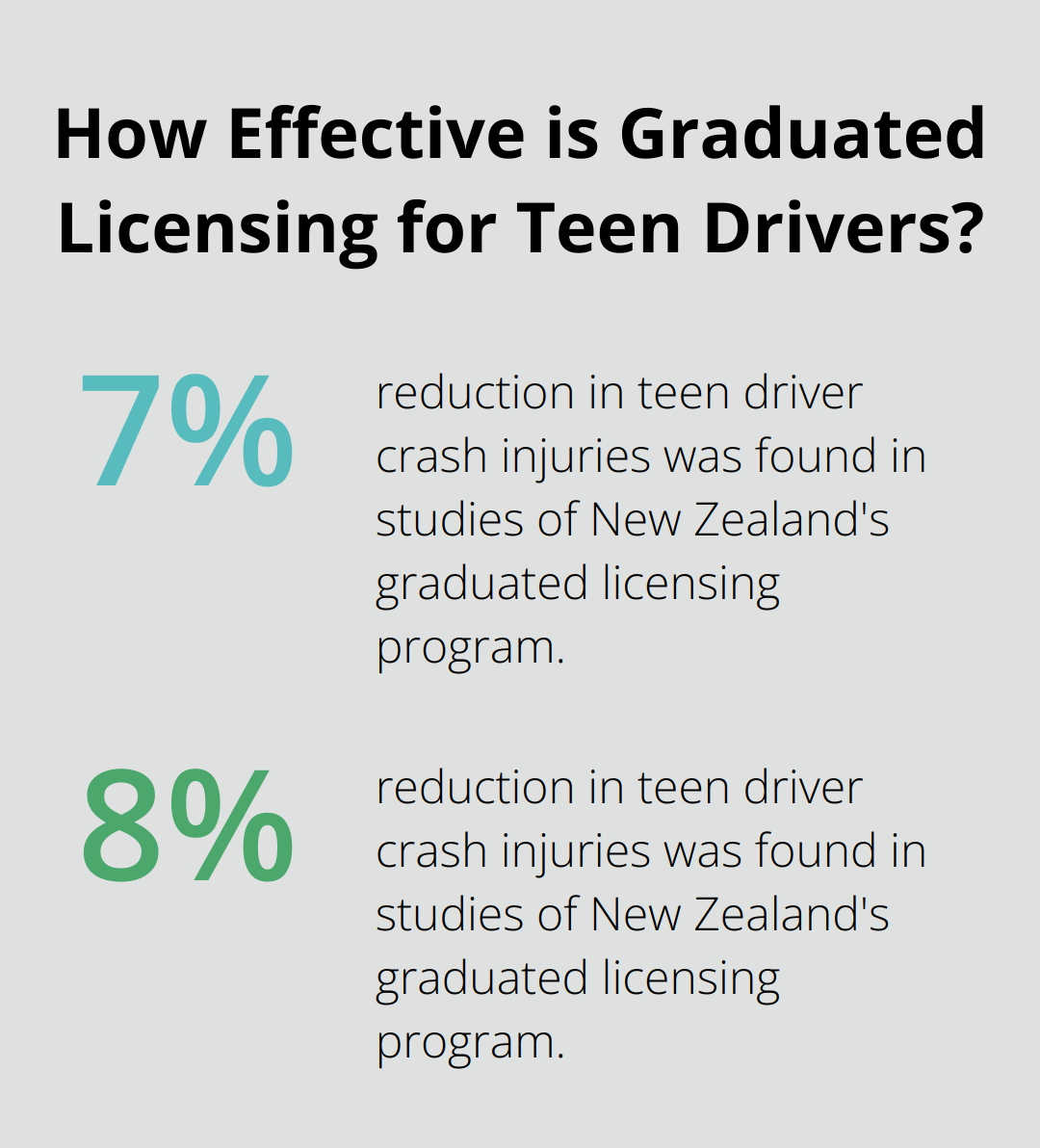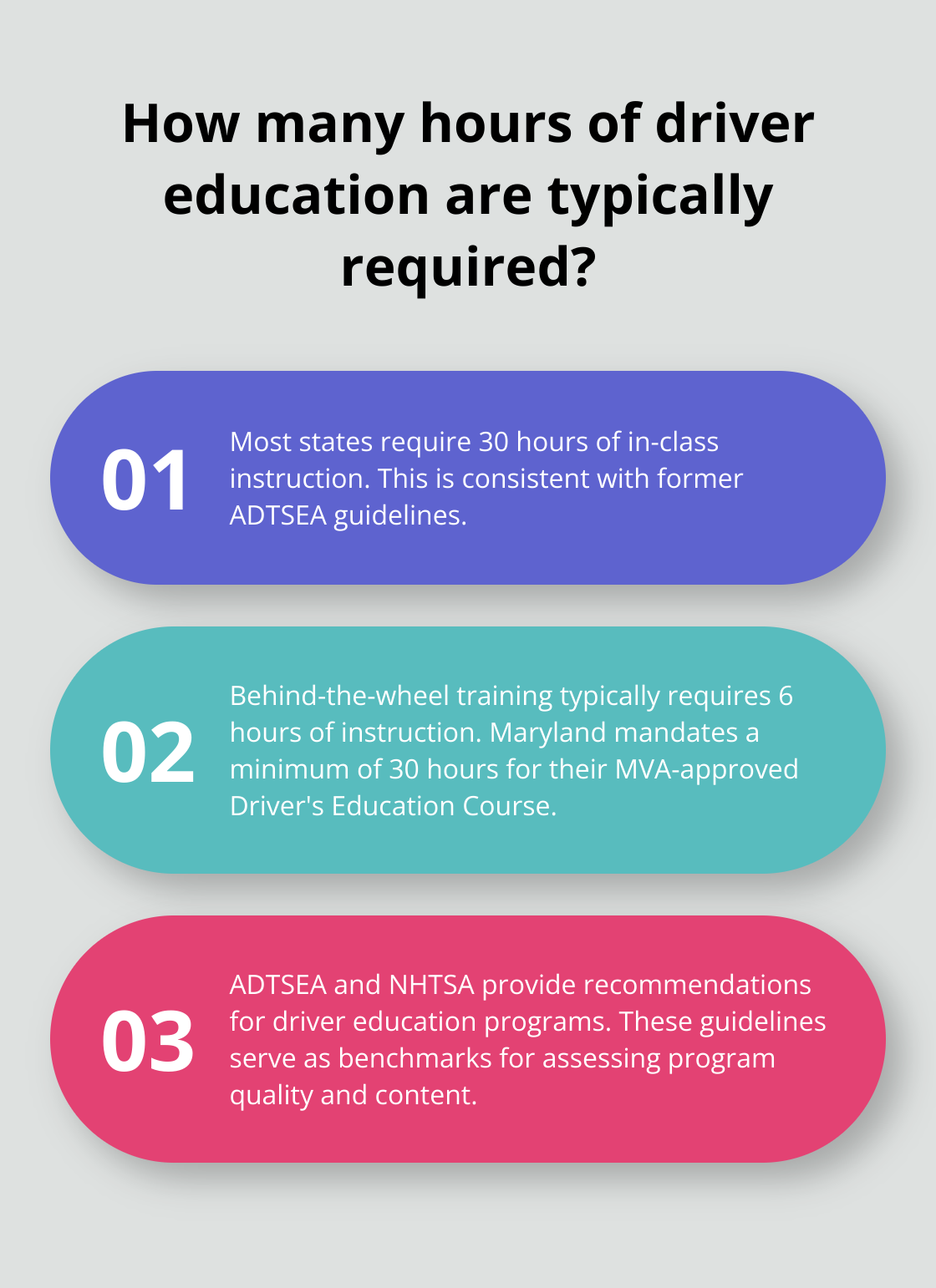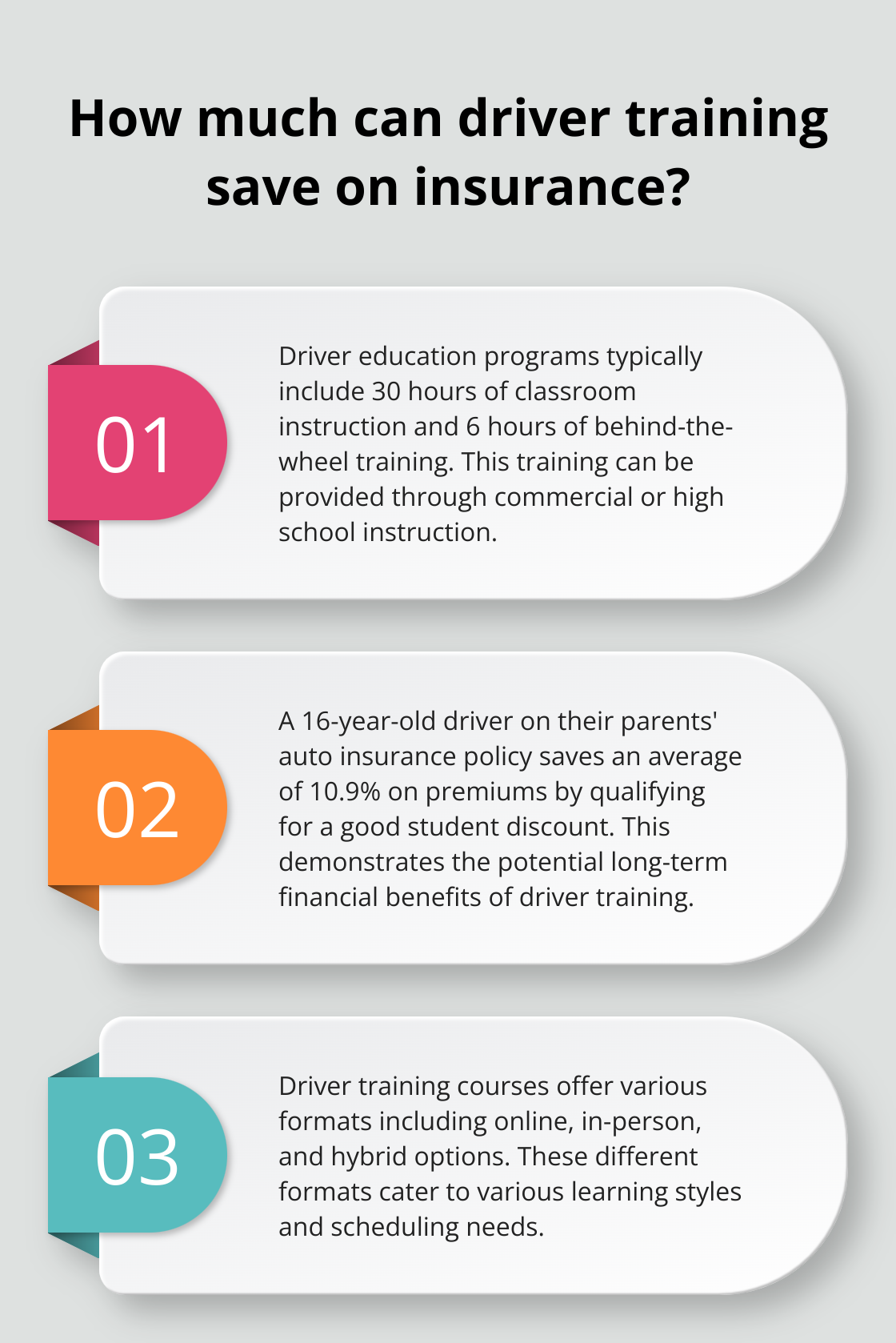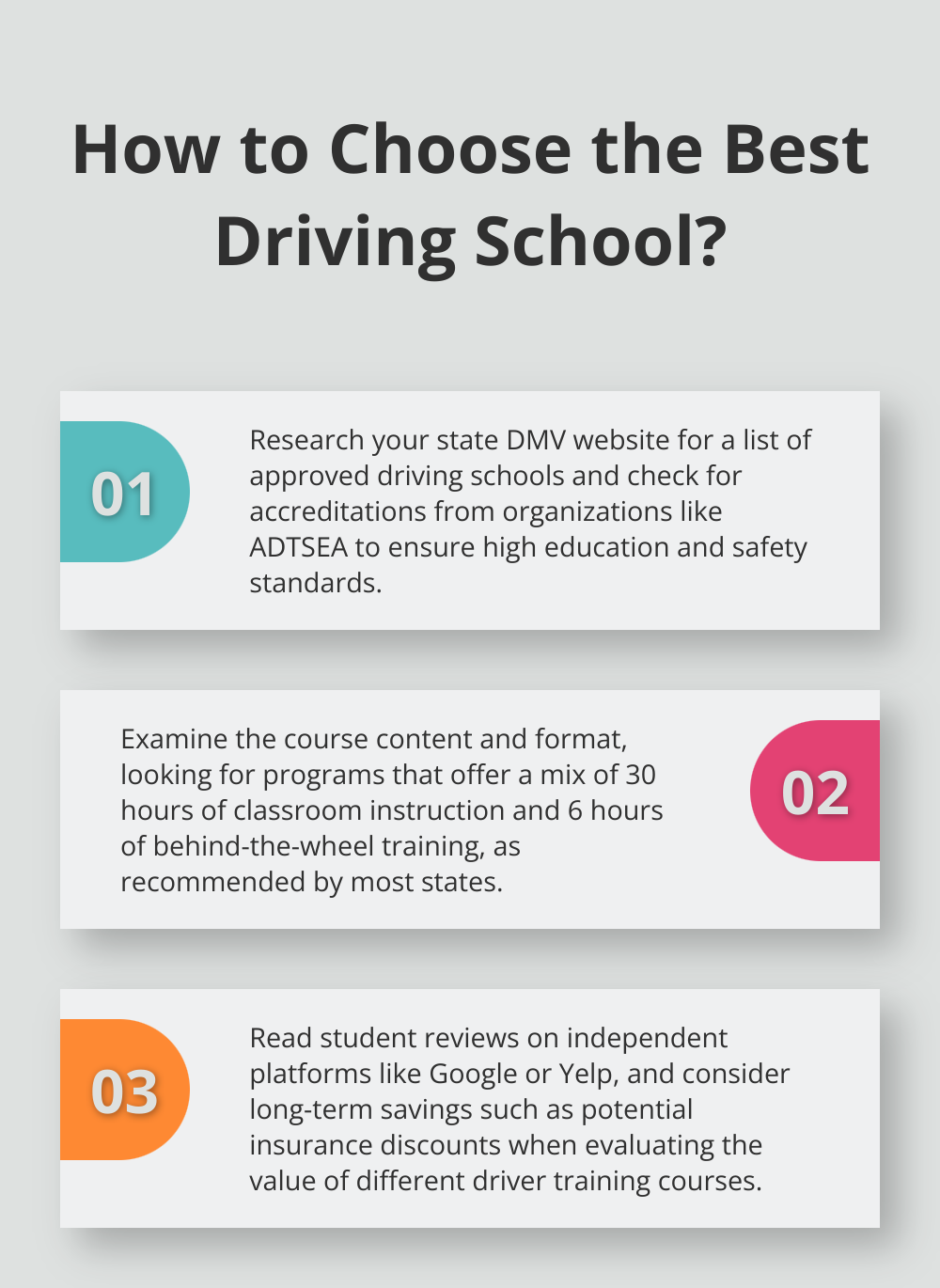Finding an approved driver training course is a critical step for new drivers. At The Wiser Driver Driving School, we understand the importance of proper education behind the wheel.
An approved driver training course not only teaches essential skills but also often leads to insurance discounts and faster license acquisition. This guide will help you navigate the process of finding the right program to kickstart your driving journey safely and confidently.
What Are Approved Driver Training Courses?
Definition and Standards
Approved driver training courses are programs that meet specific standards set by state Departments of Motor Vehicles (DMVs) or equivalent authorities. These courses provide comprehensive education on traffic laws, safe driving techniques, and practical skills necessary for operating a vehicle.
The Importance of State Approval
Choosing a state-approved course is essential for several reasons. First, it ensures that the curriculum meets the rigorous standards required for licensing. However, it’s important to note that better-controlled studies have failed to provide evidence for decreased crash rates among teen drivers as a result of driver education courses, and some even show an increase.
Curriculum Components
State-approved courses typically offer a mix of classroom instruction and behind-the-wheel training. This comprehensive approach helps new drivers develop a solid foundation of skills and knowledge. For example, state-required Joshua’s Law classes combine theoretical knowledge with practical experience.
Benefits for Drivers
Completing an approved course often results in tangible benefits. Many insurance companies offer discounts to drivers who have completed accredited programs. Additionally, some states allow drivers to waive certain testing requirements or reduce waiting periods for licensing after completing approved courses.
Road Safety Impact
Graduated driver licensing (GDL) programs, which often include approved driver education, have shown some positive results. Two independent studies of the New Zealand graduated licensing program found a sustained 7%–8% reduction in teen driver crash injuries attributable to the program.

As we move forward, it’s important to understand how to research and identify these approved driver training programs. The next section will guide you through the process of finding reputable and state-recognized courses in your area.
Researching Approved Driver Training Programs
State DMV Resources
Your search for legitimate driver training programs should start at your state’s Department of Motor Vehicles (DMV) website. Most DMVs provide a list of approved driving schools, which serves as an excellent starting point. These websites often offer more than just school listings; they typically include information on course requirements, licensing processes, and tips for selecting a reputable program. For instance, in Maryland, new drivers must complete a Motor Vehicle Administration (MVA) approved Driver’s Education Course consisting of a minimum of thirty (30) hours of instruction.
Accreditation and Standards
When evaluating driving schools, pay attention to accreditations from organizations like the American Driver and Traffic Safety Education Association (ADTSEA). Schools with such accreditations often adhere to higher education and safety standards. According to ADTSEA, most states require 30 in-class hours and 6 behind-the-wheel hours of instruction, which is consistent with their former guidelines. The National Highway Traffic Safety Administration (NHTSA) also provides recommendations for driver education, which you can use as a benchmark when assessing programs.
Instructor Qualifications
Don’t hesitate to ask about instructor qualifications and experience. Qualified instructors should possess state-specific certifications and substantial teaching experience. This information is often available on the school’s website or can be obtained by contacting them directly.
Course Content and Format
Examine the course content and format offered by different schools. Look for programs that provide a mix of classroom instruction and behind-the-wheel training. Some schools offer additional benefits such as free online driver education or convenient pick-up/drop-off services.
Student Reviews and Testimonials
Read reviews and testimonials from former students. These can provide valuable insights into the quality of instruction, the effectiveness of the program, and the overall experience. Look for reviews on independent platforms (such as Google or Yelp) to ensure authenticity.

Thorough research now can prevent potential frustration later. Take the time to find a program that not only meets state requirements but also aligns with your learning style and schedule. As you narrow down your options, you’ll want to evaluate each course more closely to ensure it meets your specific needs and goals.
How to Evaluate Driver Training Course Options
Course Format and Flexibility
The first step in evaluating driver training courses involves considering the format. Schools now offer various options: online, in-person, and hybrid courses. Online courses allow you to study at your own pace, while in-person classes provide hands-on experience and direct instructor interaction. Hybrid courses combine these elements, potentially offering a balanced approach.
Curriculum and Course Content
A thorough examination of the curriculum is essential. A comprehensive driver training course should cover all aspects of safe driving, including traffic laws, defensive driving techniques, and handling various road conditions. Look for courses that include topics like distracted driving prevention and eco-friendly driving practices.
Most commonly, driver education programs include 30 hours of classroom instruction and 6 hours of behind-the-wheel training. This training can include either commercial or high school instruction. Ensure your chosen course meets or exceeds these recommendations.
Value for Money
Price shouldn’t be the only factor in your decision, but it’s important to compare the offerings of different schools to determine the best value. Some schools charge more but offer additional benefits (like unlimited practice tests or free retakes if you don’t pass your exam on the first attempt).

Consider long-term savings as well. A 16-year-old driver on their parents’ auto insurance policy saves them an average of 10.9% on their premiums by qualifying for a good student discount.
Student Feedback and School Reputation
Student reviews and testimonials provide valuable insights into the quality of instruction and overall experience. Look for reviews on independent platforms like Google or Yelp, and pay attention to comments about instructor professionalism, course effectiveness, and customer service.
Check the school’s reputation with local authorities. The Better Business Bureau can be a good resource for this information. Schools with high ratings and few complaints are more likely to provide quality education.
Final Thoughts
An approved driver training course provides a solid foundation for safe and responsible driving. These programs offer essential skills and potential benefits like insurance discounts and faster licensing processes. The right course can significantly impact your driving future, so thorough research is essential.

We at The Wiser Driver Driving School understand the importance of quality driver education. Our comprehensive programs are designed to meet the needs of drivers at all levels. We offer state-required courses, personalized lessons, and convenient testing services to help you become a skilled driver.
Your search for an approved driver training course starts now. Take the first step towards becoming a confident and responsible driver today. Quality education on the road (and in the classroom) will set you up for a lifetime of safe driving.



